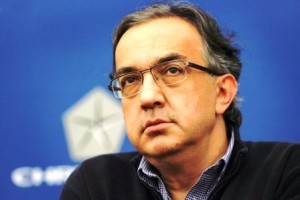Chrysler reports it lost $370 million for the second quarter of 2011, a sharp setback from its first-quarter profit – but the maker notes it would have been solidly in the black but for the cost of paying off its government loans.
With net revenues of $13.7 billion, an increase of 30%, the maker says earnings for the April – June quarter would have reached $181 million without the finance charges. Chrysler earned $116 million during the January to March quarter of this year, its first profit since emerging from Chapter 11 protection in June 2009.
Chrysler’s loss was announced at the same time Ford Motor Co. revealed its second-quarter earnings declined slightly to $2.4 billion. (Click Here for more on Ford.) Chrysler CEO Sergio Marchionne is meanwhile expecting to announce a sweeping global realignment, this week, that will further consolidate the U.S. maker and its Italian ally Fiat.
On May 24, Chrysler finished repaying the $7.5 billion in loans it owed to the U.S. and Canadian governments as part of its 2009 bailout. (For the full story, Click Here.) Refinancing the remaining debt resulted in a one-time charge of $551 million during the second quarter. Adjusting for that and other factors, Chrysler claimed a modified operating profit of $507 million, compared with $183 million for the second quarter of 2010.
So, despite the red ink, Marchionne sounded a bullish note about the latest results, declaring, “There is no doubt that Chrysler Group has taken a huge step forward this quarter.
“Refinancing our debt and repaying our government loans six years early,” he added, “reinforces our conviction that we are on the right path to rebuilding this Company and restoring it to its rightful place on the global automotive landscape.
The increase in revenues for the latest quarter is particularly noteworthy because it readily surpasses the 19% jump in unit sales – from 407,000 during the second quarter of 2010 to 486,000 — suggesting Chrysler is getting higher prices for its new products while also reducing the hefty incentives it had relied on post-bankruptcy.
After years of decline, Chrysler’s market share jumped from 9.4% to 10.6% during a latest quarter, a significant shift in a market where makers battle fiercely for even a tenth of a point. The shortage of Japanese products triggered by that country’s March 11 earthquake did have an impact on the U.S. market, however, so it remains to be seen if Chrysler will maintain its market share gains in the months to come.
The decision to repay the government loans early may have cost Chrysler in the short run, but company officials note that it also had some significant advantages. For one thing, turning to conventional lenders has reduced the interest rates the maker will pay compared to the relatively costly federal loan.
The move also permitted Chrysler’s European ally to boost its stake in the U.S. maker. As part of the bailout, the Italian automaker received a 20% stake in Chrysler, but now has increased that to 53.5% — earlier this month purchasing the U.S. Treasury’s remaining 6% stake for $560 million, and the Canadian government’s 1.5% stake for $125 million.
Fiat’s stake will rise another 5% when it begins marketing a vehicle capable of 40 miles per gallon, later this year. In recent government filings, Fiat has indicated it may eventually increase its holdings to 70%. That would require Fiat to purchase some of the holdings of the so-called VEBA operated by the United Auto Workers Union. The health care trust currently holds 41.5% of Chrysler shares, but has said it wants to convert some of those holdings into cash.
While the debt refinancing doubled Chrysler’s loss compared to the second quarter of 2010 the maker still expects to generate a net profit of anywhere from $200 million to $500 million for all of this year – with revenues forecast to reach $55 billion.
Chrysler’s financial operations were recently consolidated with Fiat’s, part of a continuing effort by Marchionne to align the two makers. He is expected to announce this week that dozens of top management positions will be restructured reflecting the virtual merger of the two companies.

